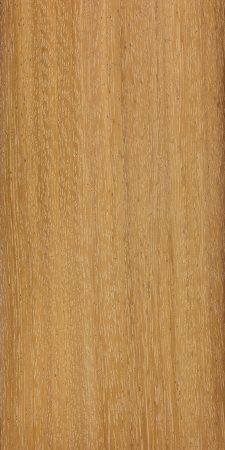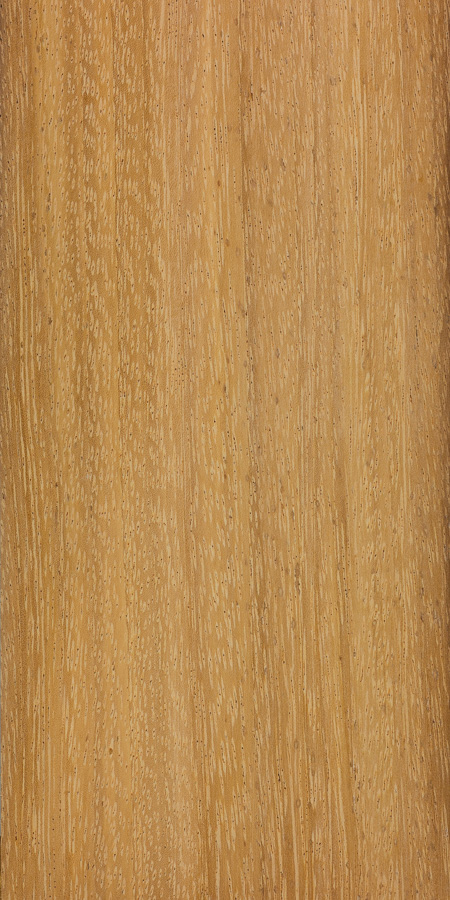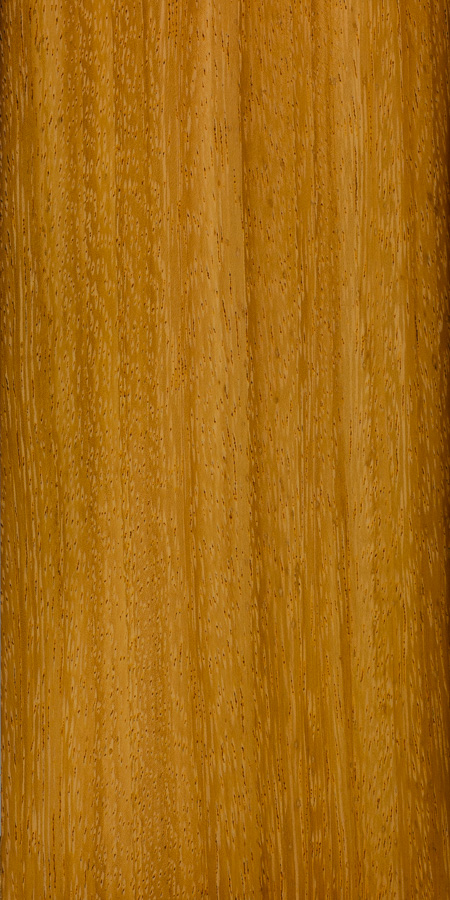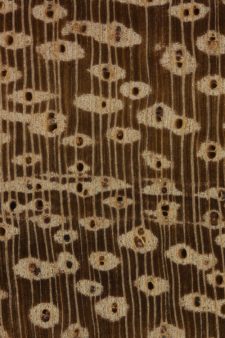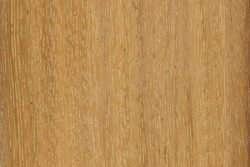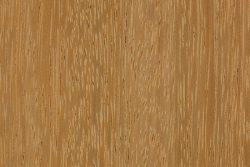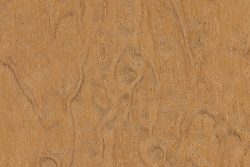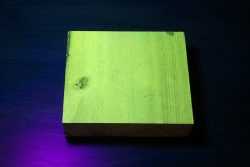Common Name(s): Chanfuta, pod mahogany
Scientific Name: Afzelia quanzensis
Distribution: Eastern Africa to South Africa
Tree Size: 66-82 ft (20-25 m) tall,
2-4 ft (.6-1.2 m) trunk diameter
Average Dried Weight: 52.1 lbs/ft3 (835 kg/m3)
Specific Gravity (Basic, 12% MC): .70, .84
Janka Hardness: 1,850 lbf (8,230 N)
Modulus of Rupture: 15,810 lbf/in2 (109.0 MPa)
Elastic Modulus: 1,704,000 lbf/in2 (11.75 GPa)
Crushing Strength: 9,570 lbf/in2 (66.0 MPa)
Shrinkage: Radial: 3.3%, Tangential: 4.8%,
Volumetric: 8.2%, T/R Ratio: 1.5
Color/Appearance: Heartwood is golden to reddish brown. Well defined sapwood is a pale yellowish white. Color tends to darken with age.
Grain/Texture: Grain is interlocked with a uniform medium to coarse texture; naturally lustrous.
Rot Resistance: Rated as very durable. Moderately resistant to termites, and variously resistant/susceptible to other insect attacks—though with good resistance to marine borers.
Workability: Generally considered somewhat difficult to work on account of its interlocked grain, causing tearout during machining operations. The wood also has a pronounced dulling effect on cutters. It is reported to be pH-balanced and non-corrosive, making it suitable for use with antiques and other delicate objects (though care should be taken to avoid excessive moisture or humidity as some colored heartwood extractives are water-soluble).
Odor: No characteristic odor.
Allergies/Toxicity: Although there are no reports on chanfuta in particular, other species in the Afzelia genus have been reported to cause skin, eye, and respiratory irritation, as well as sneezing. See the articles Wood Allergies and Toxicity and Wood Dust Safety for more information.
Pricing/Availability: Rarely exported to North America, chanfuta is sometimes exported to Europe, but is mainly used locally (especially in Mozambique). Prices should be moderate for an imported hardwood.
Sustainability: Although chanfuta is reported by the IUCN as being a species of least concern, it is listed in CITES Appendix II under the genus-wide restriction of all Afzelia species from Africa.
Common Uses: Furniture, cabinetry, veneer, flooring, docks, boatbuilding, exterior millwork and construction, turned objects, inlays, and other small specialty wood items.
Comments: Sometimes marketed with an alternate spelling “chamfuta”—this Afzelia species shares the same properties that make the other woods in the genus so popular. Namely, excellent dimensional stability, and excellent rot resistance. The wood also has a mahogany-like appearance, and is sometimes called pod mahogany (or even Rhodesian mahogany)—though it is not botanically related to other true mahoganies in the Meliaceae family.
Images: Drag the slider up/down to toggle between raw and finished wood.
Identification: See the article on Hardwood Anatomy for definitions of endgrain features.
Porosity: diffuse porous
Arrangement: solitary and radial multiples
Vessels: large, very few
Parenchyma: vasicentric, lozenge, winged, confluent, and marginal
Rays: narrow, normal spacing
Lookalikes/Substitutes: Chanfuta is very similar to other species of Afzelia. It is also closely related to merbau (the species is now in the Intsia genus, but was formerly placed in the Afzelia genus). Chanfuta is also sometimes used in place of muninga (Pterocarpus angolensis) for carvings in places in Africa where the two species are both used commercially.
Notes: Heartwood is weakly fluorescent, but not consistently so. (One study* reported that of 13 samples of chanfuta, only five were weakly fluorescent, with the others being non-fluorescent.)
*Miller, R. B. “Fluorescent woods of the world.” A Guide to More Useful Woods of the World (2007): 289.
Related Content:

